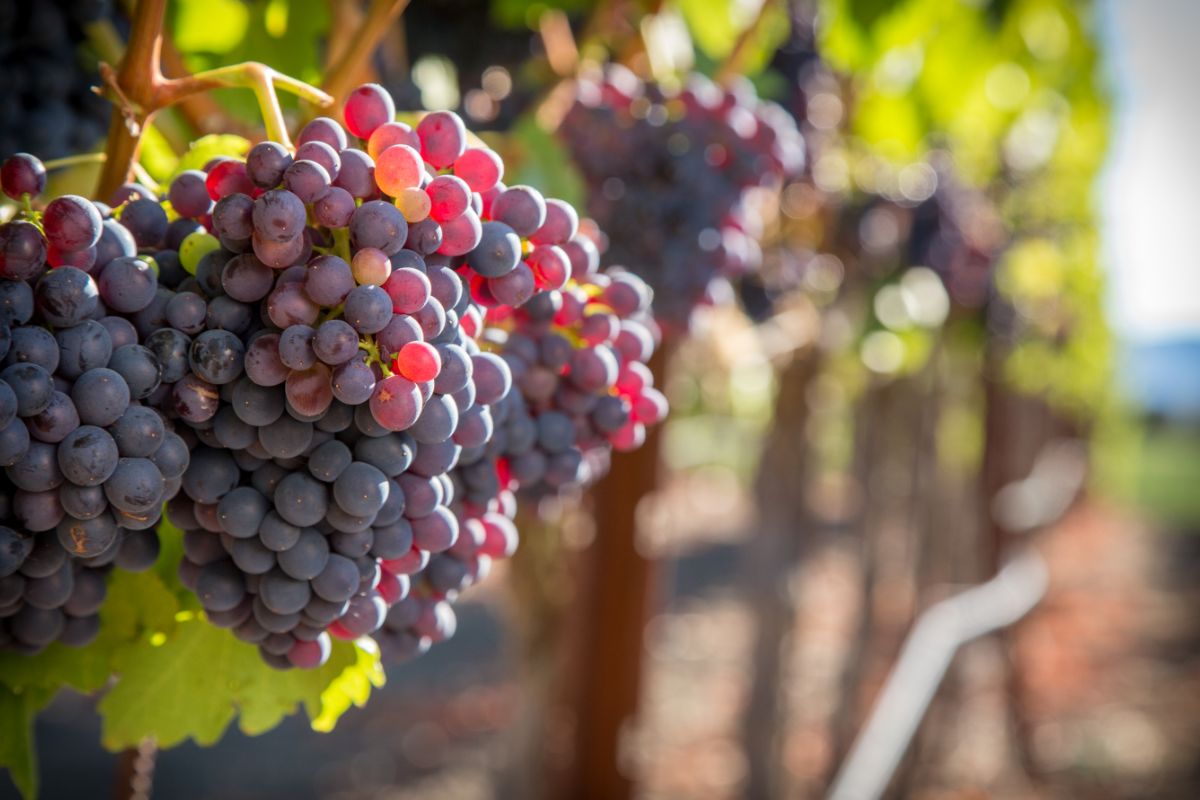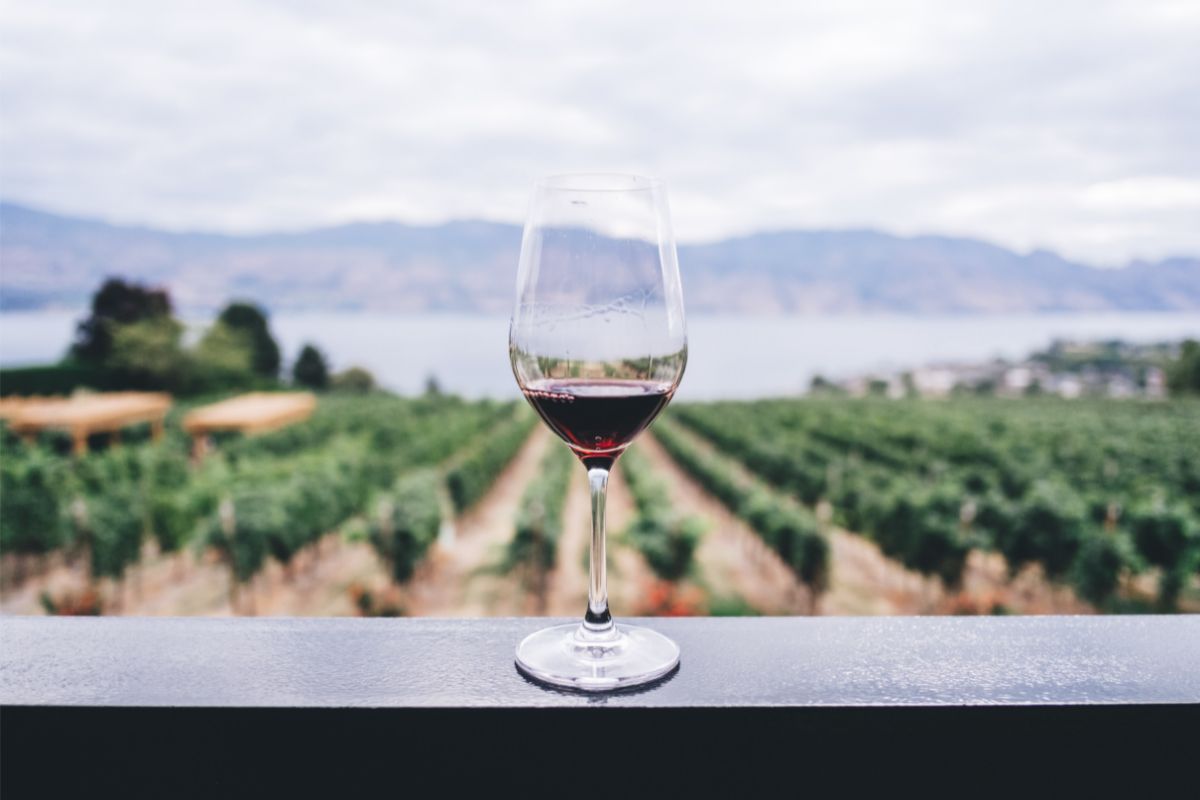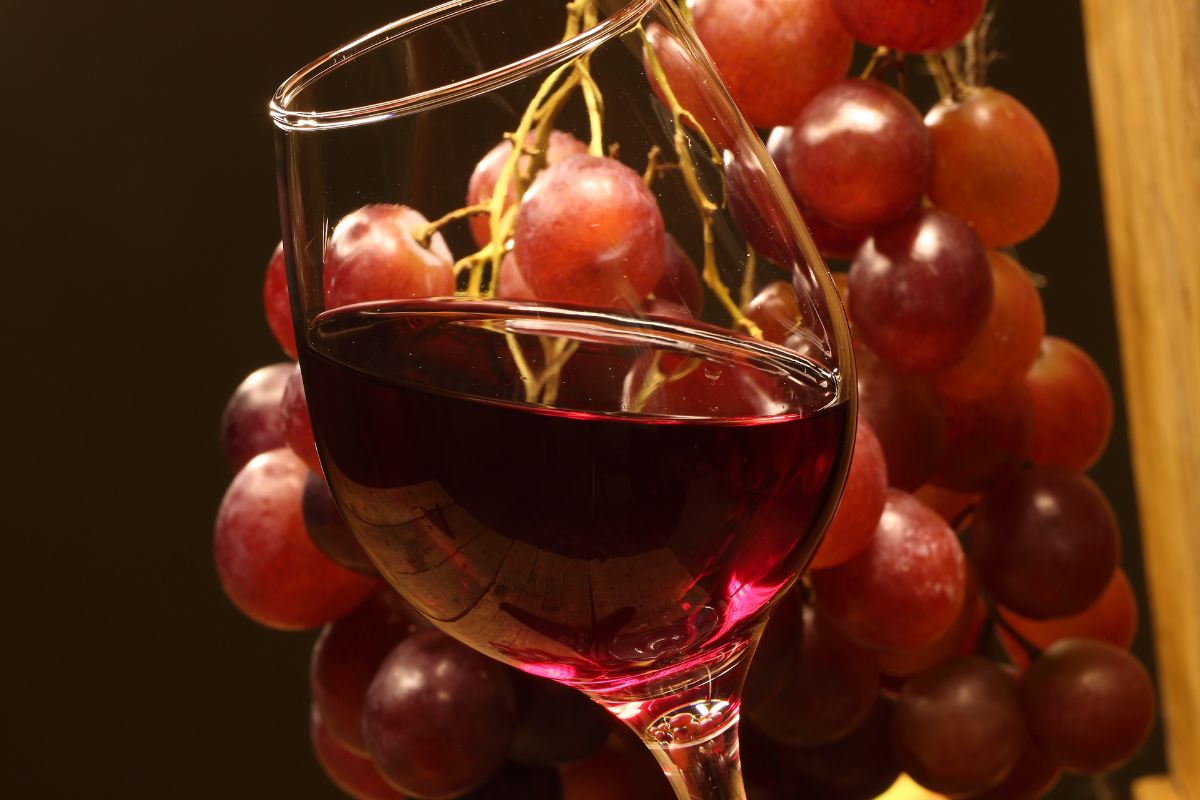Grenache is one of the most widely produced wines in the world. Grenache vineyards can be found across Spain and France, while New World variations appear in North America and Australia.
The key to the popularity of Grenache is its fruit-forward ease. With a medium body and a touch of sweetness to balance the dry finish, this is a wine that is easy to enjoy and easy to pair.

For roasted meats and spiced vegetables, Grenache is highly accommodating.
Smooth and friendly, discover more about Grenache with this complete guide.
A Brief Guide To Grenache
Enjoying hot and dry landscapes where other grapes wither, Grenache is thought to have originated in northern Spain. The Aragon region, to be specific.
Spain and France have both put their stamp on this noir grape, but New World variations have proven their adaptability.
As well as red wines, Grenache grapes have been used for rich rosés and even fortified wines.
What Is Grenache?
Grenache, sometimes known as Garnacha, is a widely planted grape variety typically used to make red wine. Part of the reason for its widespread use is the hardiness of the grape.
Grenache likes hot climates and can withstand both wind and drought. In arid climates, Grenache can produce a high ABV level.
To achieve a good Grenache, you need dry conditions and poor-quality soil. This is a grape with a sensitive response to the terroir.
The roots like to dig deep into dry soil, such as limestone, and the hardy vines respond well to some water stress. A low yield is necessary for a high-quality Grenache to thrive.
Grenache Style
There’s a roundness and a heaviness to Grenache, which can come as a surprise with the first sip.
In the glass, Grenache tends to look deceptively light. The cheerful red coloring and semi-translucency mask a fuller body.
Old World Grenache and New World Grenache both lean towards strong fruit flavors with a touch of sweetness.
Maturing late in the season in dry heat, Grenache typically has a high alcohol count, balanced by that graceful sweetness.
Simple variations of Grenache tend to be big and fruity. Expect to find a medium body combined with refreshing notes of strawberry.
More complex expressions add a deeper richness, with touches of herb and spice bringing a decadent edge to the fruit flavors.
Grenache has medium tannin levels, typically dry yet fruit-forward. Medium tannins and medium acidity make it a good base for a blend.
Grenache Flavor Profile
Red fruits are the most noticeable flavor in even a simple Grenache wine.
Expect to find raspberry and strawberry sitting heavily on the tongue, while some variations have prominent notes of black cherry. Complex and aged Grenache can take on a touch of grilled plum.
You can sometimes find a citrus note to Grenache. Blood orange and red grapefruit can cut through the sweetness, but this isn’t always prominent.
Old World Grenache tends to lean in the other direction. Expect a finish of dried herbs with a tingle of peppercorn.
The soil and climate can have a noticeable effect on the flavor of Grenache. Grown on poor soil, Grenache becomes highly concentrated. These bold expressions are often reminiscent of fruit cake.
Should You Age Grenache Wine?
Grenache can benefit from age, but it isn’t necessary for simple expressions. A New World Grenache can generally be enjoyed straight away, with the fruit flavors immediately prominent.
However, a complex Old World Grenache can benefit from aging. This will give the deeper notes time to develop, for a richer finish and better spicing.
8 to 12 years in the cellar can allow an excellent Grenache to become exceptional.
It can go either way with Grenache. Sometimes aging can allow the bottle to reach its full potential, but many variations are best enjoyed as-is.
Grenache Vs Pinot Noir Vs Malbec
Like Grenache, Pinot Noir tends to have a fruit-heavy flavor.
Expect to find plenty of cherry and raspberry, while an oak-aged Pinot Noir will have touches of spice. In this way, there are many similarities between Grenache and Pinot Noir.
However, Pinot Noir is a lighter wine with fewer tannins and a softer body. It has light and bright notes, without the boldness of Grenache.
Pinot Noir also adds touches of earthiness, to round out the fruit tones.
Malbec is another wine with red fruit flavors and touches of sweetness. Malbec is incredibly juicy, often popular as a beginner wine thanks to its smooth and fruity flavor.
A good Malbec needs minimal aging and offers friendly notes in a full body.

Popular Grenache Regions
Grenache originated in Spain, but the most celebrated expressions tend to come from France.
It’s one of the most widely grown wine grapes in the world, with both Old World and New World popularity.
Spain
Grenache is thought to have first been grown in the Aragon region in northern Spain. It does well all across Spain, but it’s the north where the vines perform at their best.
Ripening late in the season with the last of the heat, Spanish Grenache has plenty of sugar, heavy spicing, and a big body.
Some of the best Grenache wines come from old vineyards in northern Spain.
Planted in poor soil and growing deep roots, these hardy vines have withstood tough conditions to create a wine with enticing complexity.
In Spain, Grenache is often included in Rioja blends to add that dense fruitiness that Rioja is well known for.
France
While Spain might be the originator of Grenache, the grape has truly come into its own in French vineyards.
The heat of the Southern Rhone valley has produced some exceptional Grenache, as the scrubland adds herbal notes to this terroir-sensitive wine.
Lacking the bold alcohol flavor of Spanish Grenache, these styles are elegantly complex.
Perhaps the best-known Grenache variety originates from this region: Châteauneuf-du-Pape.
Known for its dense structure and full body, this wine from Cotes-du-Rhone is a signature style of Grenache.
Head to Southern France, and you can find a different take on Grenache.
This region is home to the Grenache rosé. Incredibly dry but with a big burst of fruit, the Grenache rosé is best enjoyed young and cold.
North America
Grenache is grown in North America, primarily at Tablas Creek. This New World Grenache tends to combine the fruit flavorings with bursts of citrus, adding more acidity for a brighter taste.
Instead of herbal notes, expect to find touches of florals. U.S. Grenache is often blended with Syrah, for added tannins.
Australia
Grown in dry heat, Grenache can flourish in Australia. Here, the wine is often used as a base for fortified wine. The fuller body and bold fruit flavors make Grenache particularly adaptable for fortification.
However, you’re most likely to see Grenache used in the GSM blend in Australia.
GSM — a blend of Grenache, Shiraz, and Mourvedre — is known for being bright and cheerful with a spiced finish that lingers for a long time on the tongue.
China
China might not be the first place you think of when it comes to wine regions, but if you want a good Grenache, it might be worth going east.
It’s rumored that there are almost 12,000 acres in China currently growing Grenache!
Growing Grenache
Grenache is very sensitive to its environment. There’s plenty of terroir in a good glass of Grenache — it’s like you can taste where it came from.
The soil it likes best is poor quality. Limestone and other stone soils offer Grenache roots a chance to dig deep into the ground.
Grenache also likes dry heat. Left until late in the season before harvesting, Grenache has a chance to develop strong flavors with a high alcohol concentration.
In cooler places, Grenache tends to have a softer flavor, with less alcohol.
A low yield is necessary for the best Grenache. Well-established vines, spaced out in dry conditions, will tend to produce a high concentration of grapes.
Once harvested, Grenache grapes are fermented at a low temperature. Maceration starts early in the fermentation process, but it stops early as well.
Grenache is stored and aged in new oak, to avoid overpowering the fruit flavors.

Grenache Blends
Grenache is frequently used in blends. In fact, some of the most celebrated and popular Grenache wines are blends.
Southern Rhone Red Blends
The Southern Rhone region of France produces juicy and ripe Grenache with a low level of acidity.
These grapes are often blended with other wines, creating a complex balance with a good number of tannins and greater acidity.
One of the most famous Southern Rhone blends is Châteauneuf-du-Pape. It has plenty of power and a very full body, while low production levels ensure it’s always highly sought after.
GSM
GSM, aka Grenache, Syrah, and Mourvedre, is a hugely popular Grenache blend.
Many of these blends originate in the Cotes du Rhone region, but GSM is a popular use of Grenache in the New World.
Australian wineries often transform Grenache into GSM. This is a blend known for having plenty of bright personality, with a lingering finish.
Grenache And Syrah
In America, GSM is often simplified to GS — Grenache and Syrah. Syrah adds a higher level of tannins to Grenache, creating a smooth finish and a more rounded flavor profile.
Serving Grenache
Grenache is a friendly and easy wine to enjoy. The fruit-forward taste ensures even beginners can get on well with this wine, while the sweetness makes for some excellent food pairings.
If you’re interested in trying Grenache, here are the best ways to serve it.
What To Pair With Grenache
There’s a boldness to Grenache that ensures it pairs well with strong flavors.
Try a glass of Grenache with roasted meats. It goes particularly well with the flavor of lamb. Look for a Grenache with subtle herbal notes.
Grenache is also a good pairing for barbecue meats.
The big body of Grenache ensures it’s adaptable to different foods, while the sweetness of the wine matches the sweet and savory notes of barbecue.
A touch of spice will always pair with Grenache. Try Chinese 5-spice on chargrilled vegetables, served with Grenache.
If you’re enjoying a fortified Grenache, it’s best enjoyed on its own, or with a dark chocolate dessert.
Grenache Temperature
Grenache is best served at 55 to 60 degrees Fahrenheit. This is cool without being cold.
If you keep a bottle of Grenache in a wine cellar, leave it to decant for roughly 30 minutes before enjoying. This will give it time to warm up slightly so the fruit flavors can shine.
A Grenache rosé is best enjoyed well chilled. Put the bottle in the fridge for roughly 30 minutes before pairing, and drink on a hot day.
What Glass To Use For Grenache?
A larger Bordeaux glass is ideal for a complex Grenache. This will give it room to breathe, allowing the depth of flavor to come through.
However, a universal glass will work for Grenache, particularly the simpler expressions.
Best Grenache Alternatives
Can’t get your hands on Grenache? Here are some alternatives to try instead.
Pinot Noir
Pinot Noir is lighter and easier than Grenache, often recommended for beginners. If you’re looking for a fruity and friendly wine similar to Grenache, Pinot Noir acts as a decent alternative.
Pinot Noir has an underlying earthiness that sets it apart.
Tempranillo
While Grenache leans towards fresh and juicy fruits, Tempranillo has a softer dried fruit flavor. This makes it a good alternative to a Grenache with notes of fruitcake.
Tempranillo is generally aged in oak barrels, producing a different undertone to Grenache.
Conclusion
Grown in dry and hot conditions, Grenache develops bold and strong fruit notes that are easy to find in the glass.
Known for producing some excellent blends and as an easy pairing for heavy meats, Grenache is a friendly wine that should appeal to even new wine drinkers.
Frequently Asked Questions
Grenache is generally a dry wine with a medium-full body. However, with plenty of fruit-forward notes, there’s definitely an element of sweetness.
Grenache is smooth and easy to drink. The medium-full body and heavy dose of fresh fruit flavors make it an easy wine to enjoy and perfect for pairing with grilled and roasted meats.
- Why Does Wine Taste Better With Age? - June 14, 2023
- What Does It Mean When A Bottle Of Wine Is Corked? - June 14, 2023
- Wine Fridge Vs Wine Cellar – Which One Should You Choose? - June 14, 2023
